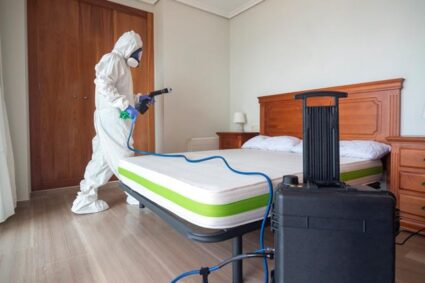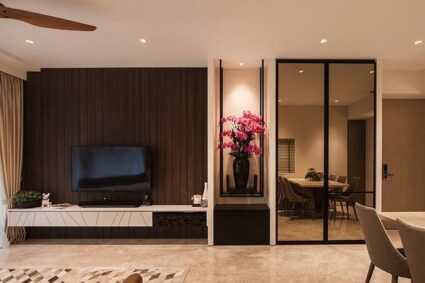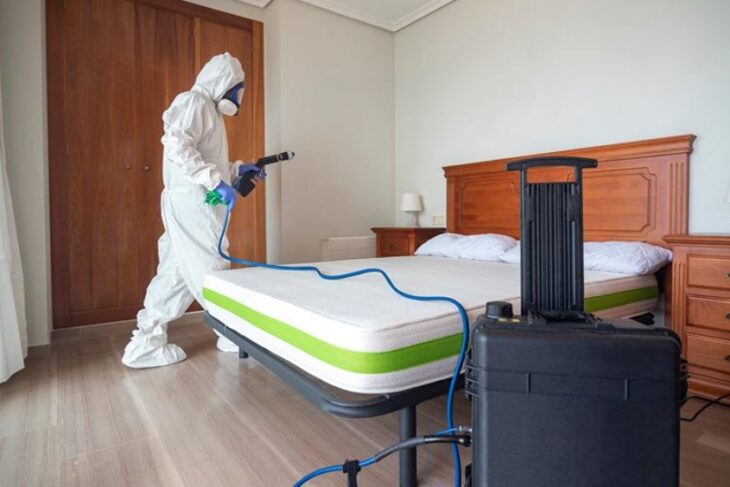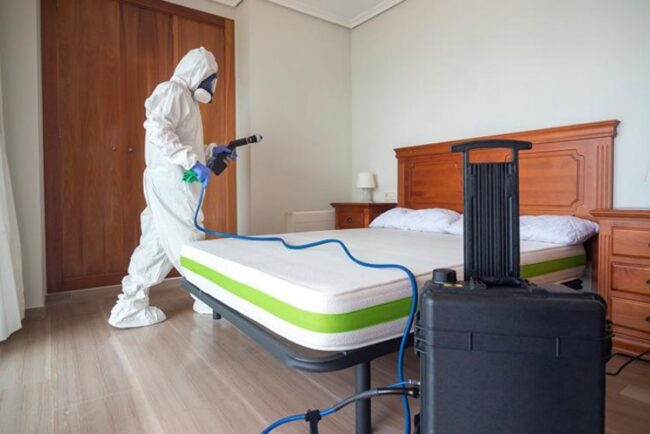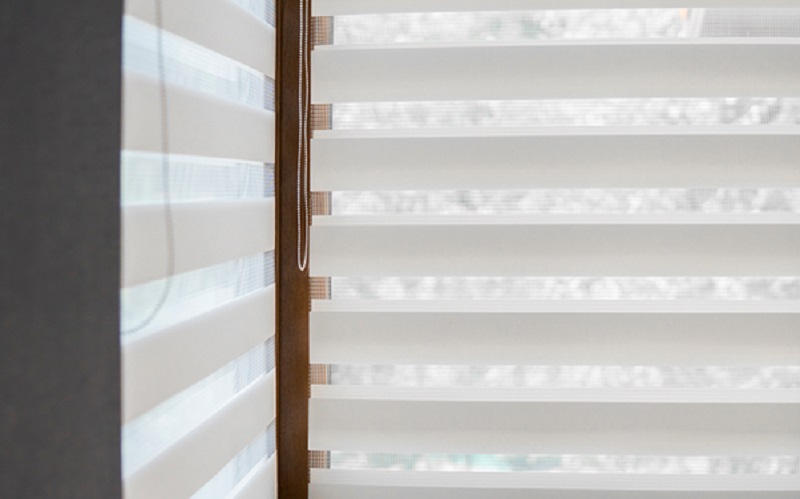
Homeowners in Singapore often focus on aesthetics and pricing when selecting curtain blinds. While visual appeal matters, functionality remains a more reliable guide for long-term satisfaction. Matching curtain blinds to room purpose allows consistent daylight control, privacy, and ambience.
Below is a brief guide on how to pick curtain blinds according to room use, helping you make practical choices before proceeding with curtain installation in Singapore.
Living Room: Balancing Natural Light and Visibility
Living rooms act as social centres. Large windows often dominate the space, bringing in daylight while exposing interiors to public view. Choosing curtain blinds in Singapore for this area means managing brightness without sacrificing privacy.
Opting for sheer blinds allows filtered sunlight during the day while preserving visibility. Layering sheer materials with thicker drapes gives flexibility. Residents prefer light-coloured blinds that reflect heat while adding softness. Vertical blinds and double roller blinds offer flexibility and sleek aesthetics.
Motorised blinds can enhance the user experience in larger living spaces. Adjusting them with remotes or wall switches adds ease to everyday use. For households with frequent guests, day-to-night transition matters. Switchable options suit those who entertain in different lighting moods.
Consider curtain installation in Singapore from professionals who can advise on mounting heights, panel sizes, and layering options. The correct fitting ensures that curtain blinds move smoothly and look polished from every angle.
Bedroom: Ensuring Darkness and Privacy
Bedrooms need complete privacy and restful environments. Choosing blackout blinds ensures light-blocking performance, helping regulate sleep cycles. Homeowners who are sensitive to light benefit from room-darkening fabrics that prevent morning glare and streetlight intrusion.
People staying in high-rise flats often request enhanced privacy. Curtain blinds in Singapore with light-blocking features meet this need while keeping interiors calm and undisturbed. Roman blinds or heavy drapes remain popular in master bedrooms due to their insulating quality and softness.
Neutral shades like navy, taupe, or charcoal reduce visual clutter and promote rest. Choosing layered blinds allows daylight access without compromising security. Automated blackout blinds support smart home integration and custom settings for convenience.
Professional curtain installation in Singapore prevents fabric bunching and reduces gaps that allow light to leak through. Proper measurement plays a big role in achieving total darkness. Installers adjust for window recesses, frames, and ceiling clearance for best results.
Kitchen: Prioritising Durability and Cleanliness
Kitchens face moisture, oil, and smoke exposure. Materials must withstand frequent cleaning and heat fluctuations. Aluminium or PVC blinds work well due to their wipe-clean surfaces and resistance to warping.
Roller blinds and Venetian blinds remain practical in most kitchen layouts. Unlike fabrics, these do not absorb odours or stain easily. Shorter panels covering only the glass area increase safety and cleanliness. Avoid long curtains that may brush counters or sinks.
Choose neutral or light hues to keep the kitchen bright. These also help conceal minor splashes. If ventilation remains crucial, blinds with perforated designs or partial transparency allow airflow while diffusing light.
Curtain installation in Singapore experts often recommend blinds with anti-bacterial coatings or fire-resistant materials. These prevent mould and boost kitchen hygiene, especially in compact flats or shared homes.
Bathroom: Focusing on Privacy and Moisture Resistance
Bathrooms need maximum privacy with minimal maintenance. Moisture-resistant materials, such as PVC or treated wood, work better than fabric options. Aluminium Venetian blinds remain a top pick for their adjustability and water tolerance.
Frosted or semi-opaque blinds give daylight access while blocking direct view. Residents prefer cordless designs to avoid tangling or accidents in small bathrooms. Installing blinds inside window recesses protects them from water exposure.
Choose light shades for small bathrooms to enhance spaciousness. Avoid long fabric curtains, as dampness can lead to mildew. Faux wood or composite materials replicate classic textures without vulnerability to humidity.
Experts handling curtain installation in Singapore typically seal edges and fix hardware securely. This prevents rusting or misalignment, even in wet conditions. Choose experienced providers who understand bathroom-specific mounting needs.
Study Room: Supporting Focus and Glare Control
Study areas or home offices need consistent lighting to reduce eye strain. Curtain blinds in Singapore designed for studies often aim to manage glare from monitors or mobile screens. Light-filtering blinds or dim-out fabrics create soft, natural lighting throughout work hours.
Installing Venetian blinds with a tilt function allows users to adjust brightness easily. Horizontal lines reduce distraction and offer a structured design suited to professional spaces. Colours like beige, ash grey, or off-white maintain a neutral tone and reduce over-stimulation.
Motorised options help users switch from bright to low-light modes without moving away from desks. Automated scheduling improves convenience during longer work periods. For shared rooms, sound-absorbing blinds support quiet work environments.
Proper curtain installation in Singapore ensures blinds fit tightly across frames, avoiding unnecessary gaps that allow uncontrolled light. Professionals also consider wall type and mounting anchors that support weight and daily adjustments.
Children’s Room: Safe, Comfortable and Play-Friendly
Children’s rooms benefit from layered curtain blinds in Singapore. Light-filtering fabrics protect young eyes while keeping the space cheerful. Blackout layers ensure uninterrupted sleep. Fun colours and child-friendly patterns help personalise rooms without overstimulating.
Cordless blinds reduce accident risks. Installers recommend tangle-free systems to ensure safety for toddlers. Easy-clean materials and durable fabrics withstand spills and frequent use. Roman blinds or dim-out curtains work well in nurseries or toddler zones.
Choose low-hanging curtain rods and childproof brackets. Avoid blinds with exposed strings or loose fabric. For dual-purpose rooms—play and sleep—switchable blinds provide the flexibility to darken or brighten when needed.
Professional curtain installation in Singapore confirms safety compliance and ensures stability. Providers test fixtures before leaving, giving parents peace of mind about safety and usability.
Conclusion
Functionality should always drive your curtain-blind decisions. Assessing each room’s purpose ensures comfort, privacy, and long-term satisfaction. Choosing suitable curtain blinds in Singapore for your living room, bedroom, kitchen, bathroom, study, and children’s room streamlines daily life and enhances living quality.
Looking for reliable curtain installation in Singapore? Contact De Art Studio for expert assistance in choosing and installing curtain blinds tailored to every room’s unique use.


